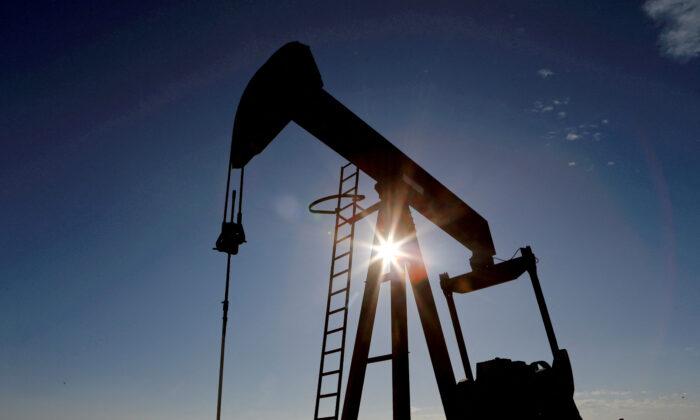Crude oil and natural gas futures rallied on Thursday after the U.S. government reported the latest domestic storage data.
Gasoline supplies declined 1.856 million barrels, down from the 2.317-million-barrel increase last week. Heating oil stockpiles rose 597,000 barrels, while distillate inventories surged by 2.698 million barrels.
In total, U.S. natural gas supplies stood at 2.195 trillion cubic feet, up 395 billion cubic feet from the same time a year ago. They are also 289 billion cubic feet above the five-year average of 1.906 trillion cubic feet.
April West Texas Intermediate (WTI) crude futures finished the Thursday trading session up $1.52, or 2.06 percent, to $75.47 a barrel on the New York Mercantile Exchange. U.S. oil prices notched their first gain in seven sessions.
Brent, the international benchmark for oil prices, ended the session above $82. May Brent crude futures rose $0.11, or 0.13%, to $82.06 a barrel on London’s ICE Futures exchange.

March natural gas futures tacked on $0.145, or 6.67 percent, to $2.319 per million British thermal units (Btu).
Understanding the Crude Oil Market
After generating some momentum earlier this month on China’s reopening and better-than-expected U.S. and European economic data, oil prices have slumped again.The recent drop in WTI and Brent prices has been primarily due to renewed recession fears, fueled by shifting expectations that the Federal Reserve will continue raising interest rates heading into the summer, which would weigh on demand volumes and slow economic growth.
“I think markets have overpriced a recession in the second half of 2022 and overpriced a recession in the first half of 2023, and maybe they are overpricing the chances of a recession in the second half of 2023,” he told CNBC on Wednesday.
If this accurately assesses current conditions, “then oil is very underpriced,” says Phil Flynn, an energy strategist and author of “The Energy Report.”
Investors have also been monitoring fuel demand trends.
Market analysts purport that global oil markets remain incredibly tight and sensitive to any supply shocks. With global demand predicted to intensify this year, prices could flirt with $100 again.
Natural Gas Nosedives
What a difference a year can make for natural gas markets.Prices have plunged 70 percent over the last three months, mainly driven by warmer-than-usual winter weather in North America and Europe.
In addition, U.S. production volumes skyrocketed to all-time highs in late 2022, surpassing 100 billion cubic feet per day. This was coupled with the Freeport LNG outage that allowed more natural gas to circulate in the domestic market.
“So lower natural gas demand due to the Freeport LNG outage coupled with record U.S. natural gas production levels resulted in natural gas inventories shifting from below average to average levels prior to the beginning of the winter heating season in October,” said Tortoise Senior Portfolio Manager Rob Thummel in the Tortoise QuickTake podcast. “Warmer than normal weather in 2023, including a rare increase in weekly natural gas inventories in January, has elevated natural gas inventories levels to 7 percent above the 5-year average. As a result, U.S. natural gas prices have experienced the most significant peak-to-trough decline since 2008/2009.”
Although prices had slipped below the $2 market in intraday trading this week, Tortoise still expects prices to average $3 this year.
The EIA STEO report penciled in spot natural gas prices at $3.40 in 2023.
In other energy markets on Thursday, RBOB gasoline futures picked up $0.0424, or 1.66 percent, to $2.5926 per gallon. Heating oil futures were relatively unchanged at $2.70 a gallon.





